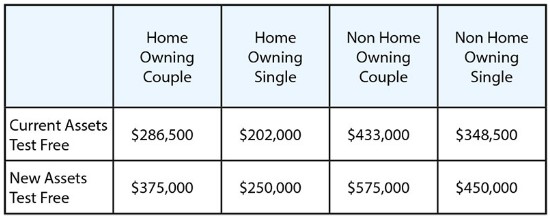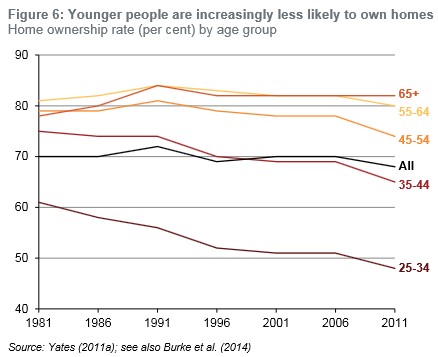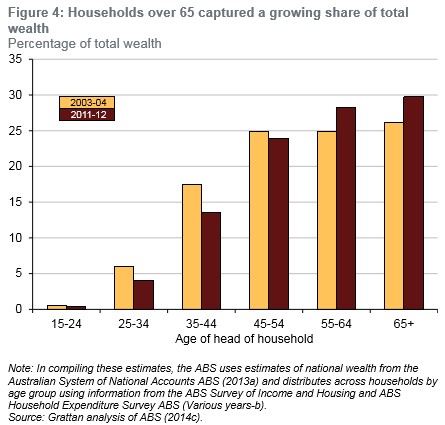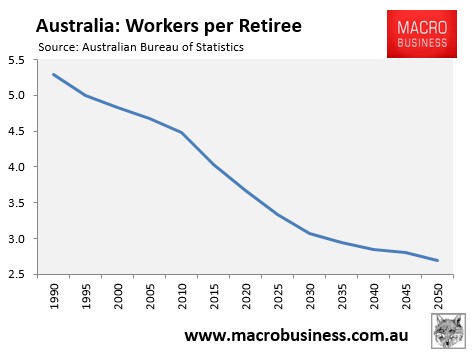Per Capita research fellow, Emily Millane, has penned a strange piece in ABC’s The Drum lamenting the deal struck by the Abbott Government and the Greens to wind back eligibility to the Aged Pension to retirees with significant assets:
…with the barest scintilla of democratic scrutiny, the Government and the Greens recently instituted a new pension means test based on the idea that our system is unsustainable – nay, a system of false entitlement.
As Government Minister Kevin Andrews said, “With the population ageing at the rate that it is, we’ve got to ensure in the future that we’re able to sustain the welfare system, otherwise we’ll find ourselves in 10 or 15 years’ time in the situation that some of the countries in Europe are in.”
Meanwhile, the OECD projects that Australia’s age pension spending will be 4.9 per cent of GDP in 2050.
The $2.4 billion estimated savings over the forward estimates from the Government’s deal with the Greens should have been used to increase the base pension rate up to the point where the change is budget neutral. Why? Because Australian pensioners on the full pension are living below the poverty line. They do not even have ‘modest’ incomes according to standards used by the retirement incomes industry…
The deal had to be framed as a savings measure because of the manufactured idea that we have a pension sustainability crisis. Australia should be increasing taxation through the private pension system. Labor has shown that some minimal changes to tax on super earnings of more than $75,000 and contributions for incomes of more than $250,000 can generate significant savings.
Instead, we are left with an isolated change to the public pension system based on a ‘deal’ between the Government and the Greens where the Government agrees to ‘consider’ changes to superannuation.
While I obviously agree wholeheartedly that superannuation concessions should also be addressed, and have argued the case feverishly for many years, Ms Millane’s criticism of the pension reforms does not pass scrutiny.
To recap, the Budget announced that the thresholds for the Aged Pension would be adjusted so that those with financial assets (in addition to the family home) of $547,000 for singles ($823,000 for couples) will no longer qualify for the part-pension (see below table).

According to these changes, financial assets above $375,000 for a couple will lose access to the Aged Pension at the rate of $3 per $1,000 in assets, up from $1.50 currently, restoring the system back to its pre-2007 state.
However, while access to the part pension was curtailed, the assets threshold has also been increased, thus benefiting those retirees with fewer assets (see below table).

Thus, the pension changes agreed by the Coalition and the Greens have made the system more equitable, and are therefore supported by the Australian Council of Social Services:
“The changes to the Pension assets test passed by the Parliament last night help ensure that the Pension is going to people who need it, including improving the adequacy for people who have limited assets. The tightening of the assets test to pre-2007 levels reinforces the role of the pension as a safety net payment to prevent poverty,” said Dr Cassandra Goldie.
“ACOSS also welcomes passage of legislation abolishing the Seniors Supplement. This Supplement is very poorly targeted, going to older people who are not eligible for the Age Pension due to their substantial assets”.
What Ms Millane also fails to mention is that more than 80% of retirees own their own homes, which are of course excluded from the assets test to qualify for the Aged Pension (see next chart).

These 80%-plus of retirees have also enjoyed massive windfall gains in wealth, thanks to the mammoth surge in Australian home values over the past 20 years (see next chart).

And this surge in retiree housing wealth has, of course, come at the direct expense of their grand children, who are now either locked-out of housing altogether (see above chart), or are required to undergo a lifetime of debt servitude in order to afford a home.
How exactly is it fair that these same mega-mortgaged younger Australians are being expected to fund the retirements of older home owners, who are in many cases far wealthier than they are?
If Ms Millane truly cared about equity, she would instead argue to have the family home included in the assets test for the Aged Pension, with part of the money saved redirected to significantly increasing the base rate of the pension as well as the assets test threshold. This way, welfare would be far better targeted and those pensioners without any significant assets – either financial or non-financial – would be made far better-off.
Meanwhile, home owning retirees that miss out on the pension could maintain their income levels by taking out a reverse mortgage through the government’s Pension Loans Scheme – a state-run reverse mortgage scheme that allows eligible retirees to borrow against their homes to receive payments from the government equivalent to the full Aged Pension.
The interest rate through the Pension Loans Scheme is only around 5%, repayable upon their estate or sale, and these home-owning retirees could continue to live in their home as they do now. For all intents and purposes, they would experience no change in their living standards, but with far less drain on the Budget.
With the Aged Pension costing the Budget some $40 billion this financial year, growing by 7% annually, and the ratio of workers supporting the elderly shrinking (see next chart), the system as it stands is utterly unsustainable and inequitable from an inter-generational perspective.

Again, it makes absolutely no sense that the biggest asset that most retirees own – their principal place of residence – is excluded entirely from their eligibility for the Aged Pension, particularly given the massive increase in housing wealth they have enjoyed.
It makes even less sense to expect younger Australians, many of whom will never be fortunate enough to own their own homes, to continue subsidising oldies with significant assets.
If only commentators like Ms Millane would acknowledge these truths rather than running a mis-guided campaign about fairness.

